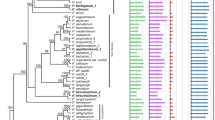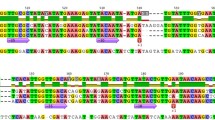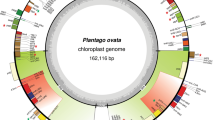Abstract
Two basal lineages of flowering plants possess an intergenic inversion in the chloroplast inverted repeat (IR), a region of the genome from which there have been few previous reports of this class of structural mutation. The size of the inversion (approximately 200 bp) places it in a class not previously seen in the plastid genome. The two lineages with the rearrangement, representatives of the orders Laurales and Nymphaeales, are not closely related and the inversion therefore probably arose independently in each group. The inversion is bordered by short, but highly conserved, inverted repeat motifs that were most likely associated with the inversion process. A stem-loop structure that involves these motifs may play a functional role in mRNA stability. It is seen in all optimal or nearly optimal predicted RNA foldings of the intergenic region.
Similar content being viewed by others
Author information
Authors and Affiliations
Additional information
Received: 28 September / Accepted: 17 November 1999
Rights and permissions
About this article
Cite this article
Graham, S., Olmstead, R. Evolutionary significance of an unusual chloroplast DNA inversion found in two basal angiosperm lineages. Curr Genet 37, 183–188 (2000). https://doi.org/10.1007/s002940050517
Issue Date:
DOI: https://doi.org/10.1007/s002940050517




